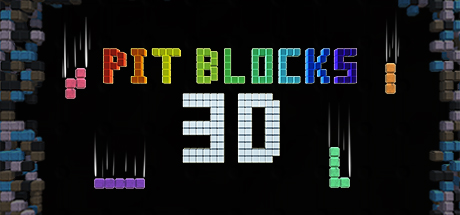Falling Blocks 3D Mac OS
Part 1
- Falling Blocks 3d Mac Os X
- Falling Blocks 3d Mac Os Catalina
- Falling Blocks 3d Mac Os 7
- 3d Mac Software
- By default, the top row of keys on your Apple keyboard control many different features on your Mac. For example, pressing the keys with speaker icons adjusts the volume. If your Mac has a Touch Bar, learn about using function keys on MacBook Pro with Touch Bar.
- The pre-holiday's hustle and bustle is everywhere along the village streets. The village residents hurry to buy treats and presents and decorate their homes with string lights and wreaths. The snowy sidewalks and roofs glisten, the starry sky peeks through the chilly air. Christmas is almost here. Everyone is getting ready to let the fairy tale in their homes!
Features and functions:
· The Sculptris serves as a powerful yet elegant tool for designing 3D art-forms or sculpting through digital media.
If you're planning on running the treasures of the past you'll find here on real old Macintosh hardware from the 90's, you sir/madame, deserve to win an Internet! For others, there's SheepShaver, a PowerPC emulator capable of running Mac OS 9.0.4 down to Mac OS 7.5.2 and there's Basilisk II, a 68k emulator, capable of running Mac OS (8.1 to 7.0). Interesting puzzle game with falling bricks where you should place bricks in order to have full lines with blocks. The goal of Falling Bricks game is to score as many points as possible by clearing horizontal lines of blocks. The player must rotate, move, and drop the falling bricks inside the playing field.
· The program, at its centre, provides the user with a clay ball each time it is run, from where on one can proceed with designing/sculpting .
· The toolkit and the mechanism for creation of designs are unique yet easy to understand.
· Sculptris makes it possible to drag and place clay models, alter their shape and size, materialize your designs in any desired fashion.
· The tool in sculptris functions solely through mouse buttons.
Pros of Sculptris:
· Thisfree CAD software for Macneeds no prior installation.
· It is a lightweight program that serves as an effective and utility application for 3D modelling ventures.
· This program helps create amazing designs without having to go through tedious learning curves or learn extensive technical concepts.
Cons of Sculptris:
· Certain editing options such as 'undo' and some commands are not easily accessible.
Falling Blocks 3d Mac Os X
· Support or software-specific help are not too particular and can be developed for better user experience.
· The interface does not quite match up to the industrial standards.
User Comments/Reviews:
·Easy UI (user interface) enables learning of complete program via trial and error in a less than an hour rendering virtually anything you may be able to sculpt with clay instantly with professional quality.
· Very simple. Can export to brush (using GoZ) or as an ob_x_ject to be opened.
https://ssl-download.cnet.com/Sculptris/3000-6677_4-75211273.html
Screenshot:
Introduction
When we last left Mac OS X, it had reached the second developer preview release. The core technologies and APIs were all present, but the GUI remained troublingly unfinished. At the recent MacWorld Expo in San Francisco (MWSF), Steve Jobs revealed in his keynote address that the Mac OS X DP2 GUI is not so much 'unfinished' as it is wholly unrelated to the GUI that will ship with the OS--a place-holder, if you will. The actual Mac OS X GUI was briefly demonstrated during the keynote, and it is a radical departure from traditional Mac OS.
This article will review Jobs's Mac OS X GUI demonstration and explain the underlying technology that makes it possible, emphasizing what is so new and different about it, and what it means for Mac users and PC users alike. Before we start, let's briefly review Apple's latest marketing angle on the Mac OS X core.
Core OS: The Latest Picture
Before demonstrating the GUI, Jobs reviewed the Mac OS X architecture. The culmination of this review was yet another high-level block diagram of the OS:
Mac OS X Architecture

Nothing has really changed since Mac OS X was first announced over a year ago, but the naming, emphasis, and ordering of the blocks has been altered to suit Apple's marketing goals. For example, the bottom-level block is now labeled 'Darwin.' Darwin is Apple's name for the open source distribution of the Mac OS X kernel. In previous diagrams, the bottom-level block was simply labeled 'Mach.' It's still Mach, of course, but the Darwin project also encompasses the BSD API layer--something that was previously shown as a separate block above Mach and alongside the other APIs like Carbon and Cocoa.
These cosmetic changes say a few things. First, they emphasizes the fact that Darwin is to be synchronized with Mac OS X. The current Darwin release available at Apple's web site is somewhat behind Mac OS X's internal development, but Darwin will be updated when Mac OS X ships to be exactly identical to the kernel in the commercial release. This was announced long ago at an Apple World Wide Developer Conference (WWDC), but it was not emphasized to the general public. Consequently, many developers have looked at the Darwin project as a sort of academic exercise, or as open source political posturing by Apple. Now it's clear that it's in developers' best interests to pay attention to Darwin. Even if they don't make direct contributions to the source code, just having the code on hand as a reference is a great aid to development (especially when contrasted with the classic Mac OS development experience, where many OS features were obscure 'black boxes' with spotty documentation).
Falling Blocks 3d Mac Os Catalina
 Advertisement
Advertisement Second, since the BSD APIs are part of Darwin (and therefore lose their own block in the diagram), this new view of Mac OS X de-emphasizes the BSD APIs. They're still there, and developers can still write to them, but the other APIs are more applicable to traditional Mac OS development. Similarly, Java lost its API block and was merely mentioned as an alternate language for Cocoa development. Again, this is more of a marketing change than a technological one.
The (green) graphics layer of the diagram has also been changed. Open GL, QuickTime, and Quartz are listed alongside each other despite their significant differences. OpenGL is the 3D API everyone knows and loves. QuickTime is Apple's media architecture which encompasses everything from audio and video playback to a 3D API of its own (QuickDraw 3D) which exists at a level of abstraction far above OpenGL. Indeed, QD3D could conceivably be implemented on top of OpenGL. (Apple's RAVE API is used instead, but it's a moot point since QD3D is now defunct.) And Quartz, which will be detailed in the next section, is the lowest-level of Mac OS X's display system. Why are they side-by-side in the block diagram? Perhaps it makes for a less confusing overview for non-technical people.
Falling Blocks 3d Mac Os 7
As mentioned earlier, the (purple) API layer now contains only the three C's: Classic, Carbon, and Cocoa. They're listed in the order that Apple expects developers to use them: Classic for existing Mac OS apps, Carbon for revised Classic apps that take advantage of Mac OS X's modern features, and Cocoa for developers interested in the latest revision of the object-oriented NeXT/OpenStep APIs.
3d Mac Software
But it's the top layer that is entirely new. Previously, this block was evasively labeled 'Advanced Mac OS Look and Feel.' Exactly what that meant, no one knew. Knowledge of that block's existence led to significant hedging about the GUI present in Mac OS X DP2, but I don't think anyone expected something as radical as Aqua. Before we get to that, let's review what is really the most significant part of the Mac OS X GUI--that box that's been in the diagram for over a year and that not many people took notice of until Aqua showed what it could do: Quartz.